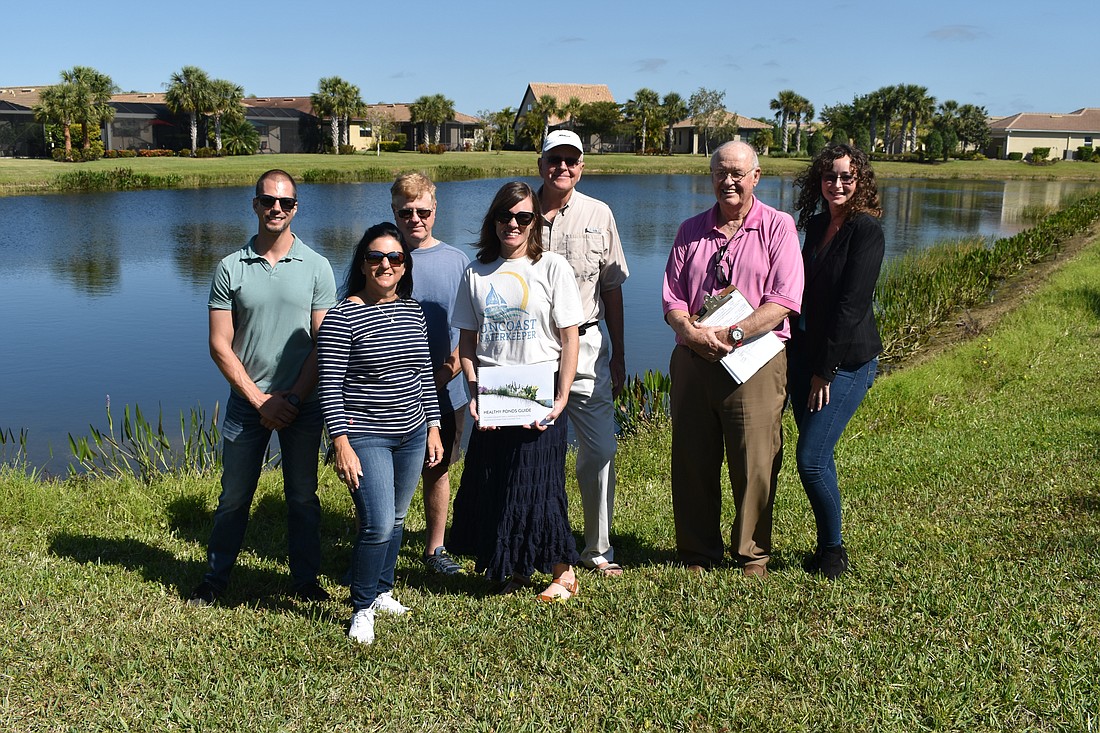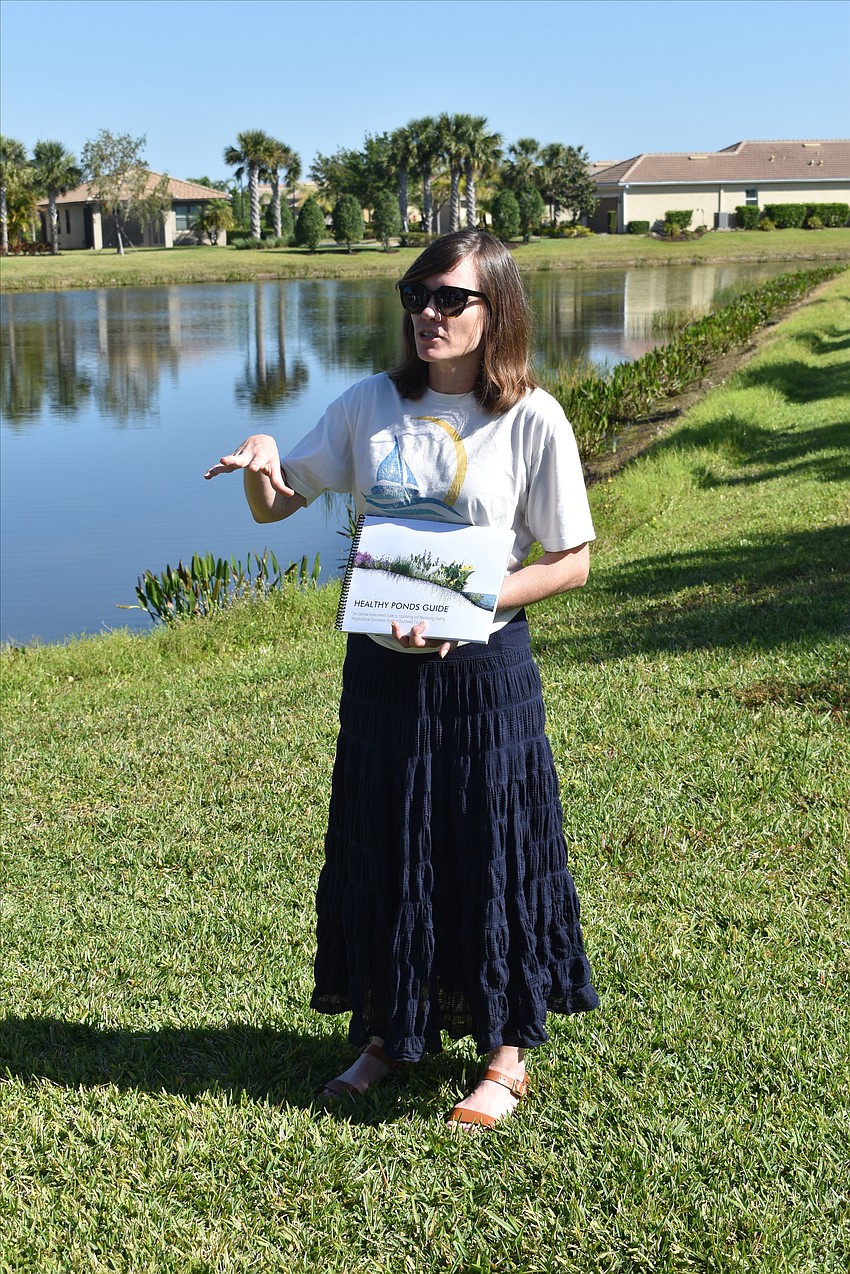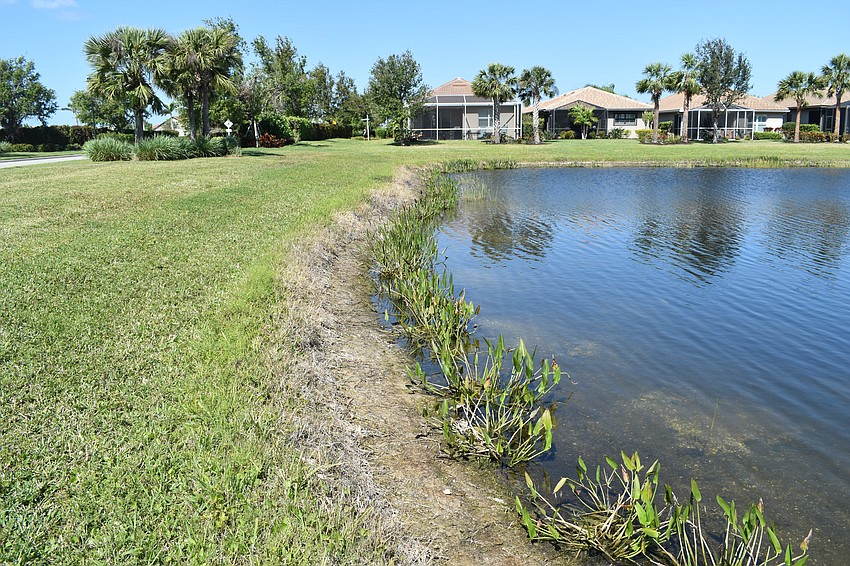- July 26, 2024
-
-
Loading

Loading

Abbey Tyrna, executive director of Suncoast Waterkeeper and a University of Florida extension office scientist, said that nearly all waters entering Sarasota's bays do not meet the criteria to be safely fished and swum.
Although ponds are intended to prevent 80% to 90% of nutrient pollution in waterways, research has found that they only remove about 40%.
Tyrna said that with 6,600 ponds in the county, 4,500 of which connect to bays, a small group of experts are stretched to their limits in managing the ponds — meaning clear expectations needed to be set.
“What better way to do that than to approach the 4,500 detention ponds with a comprehensive guide on how to manage them?” Tyrna said.
The Healthy Pond Collaborative, which includes both Suncoast Waterkeeper and Solutions To Avoid Red Tide, among other organizations, debuted "The Healthy Ponds Guide: The Essential Guide to Establishing and Maintaining Healthy Neighborhood Stormwater Ponds in Southwest Florida," in December 2022.

Sandy Gilbert, chair of Solutions To Avoid Red Tide, said management of these ponds is important, as research from the Department of Environmental Protection and the Fish and Wildlife Research Institute in St. Petersburg shows a direct correlation between stormwater releases and red tide.
The debut of the guide, which is available on the organization's website, follows a grant of $250,000 by the Barancik Foundation announced in 2021.
The 62-page guide is targeted at individuals and HOAs that own ponds, offering a detailed breakdown of best practices. Among the topics covered are pond anatomy, how to evaluate maintenance contractors, how to enhance buffering and shorelines and how to manage runoff and pollution.
Tyrna said the collaborative hopes to highlight six major practices for ponds it has found are not being observed extensively. The first is obtaining the permits for one's pond so that aspects — such as its piping, components and water flow — can be compared to their original state when the pond was built.
Once pond owners have the permit, they can achieve the 40% figure for nutrient reduction, she said. However, more must be done to reach 80% or 90%.
She also said pond owners must add plants to their ponds, including a vegetative buffer to stabilize the shoreline and reduce runoff, and they must place plants in the pond to support the food web while ensuring that invasive species are eliminated and herbicides are avoided when possible.
Some of the guide's advice includes creating a 3- to 10-foot buffer zone filled with more than 50% native and Florida-friendly plants, as well as planting rain gardens to divert gutter water away from ponds.
Although new legislation has been introduced that will address issues with the management of stormwater ponds, Tyrna said, these laws do not apply to the existing ponds.
Nonetheless, Gilbert said the collaborative was receiving some help from Sarasota County, as it will be spending $500 million on upgrades to wastewater plants at Bee Ridge Road and other locations.
“You’re going to take tons of nitrogen that’s been going into Sarasota Bay offline,” he said, stating the legislation could drop nitrogen levels by as much as 70%.
Additionally, he said the collaborative is working on an amendment to the unified development code that would require a no-mow zone beside ponds, and 30% to 50% minimum planting.
Tyrna said the solution doesn't end with a guidebook. Local laws do not currently require all of the pond features promoted by the collaborative, while she said developers are not always receptive to the idea of implementing them.
She said their response can be, “This is this is all that's required. Why do we need more?”
To help incentivize healthy pond practices, the Healthy Pond Collaborative is offering grants to communities in Sarasota and Manatee counties in a three-year cycle. It offered grants to 11 communities in 2022, and is currently reviewing grants for 2023.
IslandWalk at the West Villages in Venice is one such community, having received $3,000 in 2022 and being under review for 2023.

“Organizations like the Healthy Pond Collaborative have helped us to understand the link between what we do locally in all of our communities, and what eventually ends up in the Gulf of Mexico,” said Russ Gerry, a board member of the community's HOA.
Gilbert said of the collaborative, "You are so lucky, in this area, to have this kind of group, and of course, most importantly, people like Russ; you've got to have the citizens involved or it doesn't matter."
The community is in the process of upgrading its approximately 35 miles of lakefront. Gerry said this initiative is not only environmentally friendly, but that creating stable banks is the most cost-effective practice.
“For those who really don’t care about the algae and the red tide, it's about ensuring they understand that we’re saving a lot of money, hopefully, in the future, because repairing these banks is extremely expensive, as we have found out.”
One recommended feature the neighborhood has installed is a no-mow zone, a pond buffer in which mowing is forbidden, which it has designated as three feet in length.
Gerry said while there are some complaints from residents about the zone, they are not significant in number.
“We have about 2,400 homes here, and the number of complaints is very, very small when you consider that,” he said.
Also, the community installed about 30,000 plants across about five miles, last year, with another 30,000 plants planned for this year.
He said the community was able to install these at a low rate of $0.85 per plant — Gilbert said the standard cost is $1.50 a linear foot — for a total of $25,500, excluding installation and related costs.
Communities may be considered once each year for a grant, so long as they meet funding requirements.